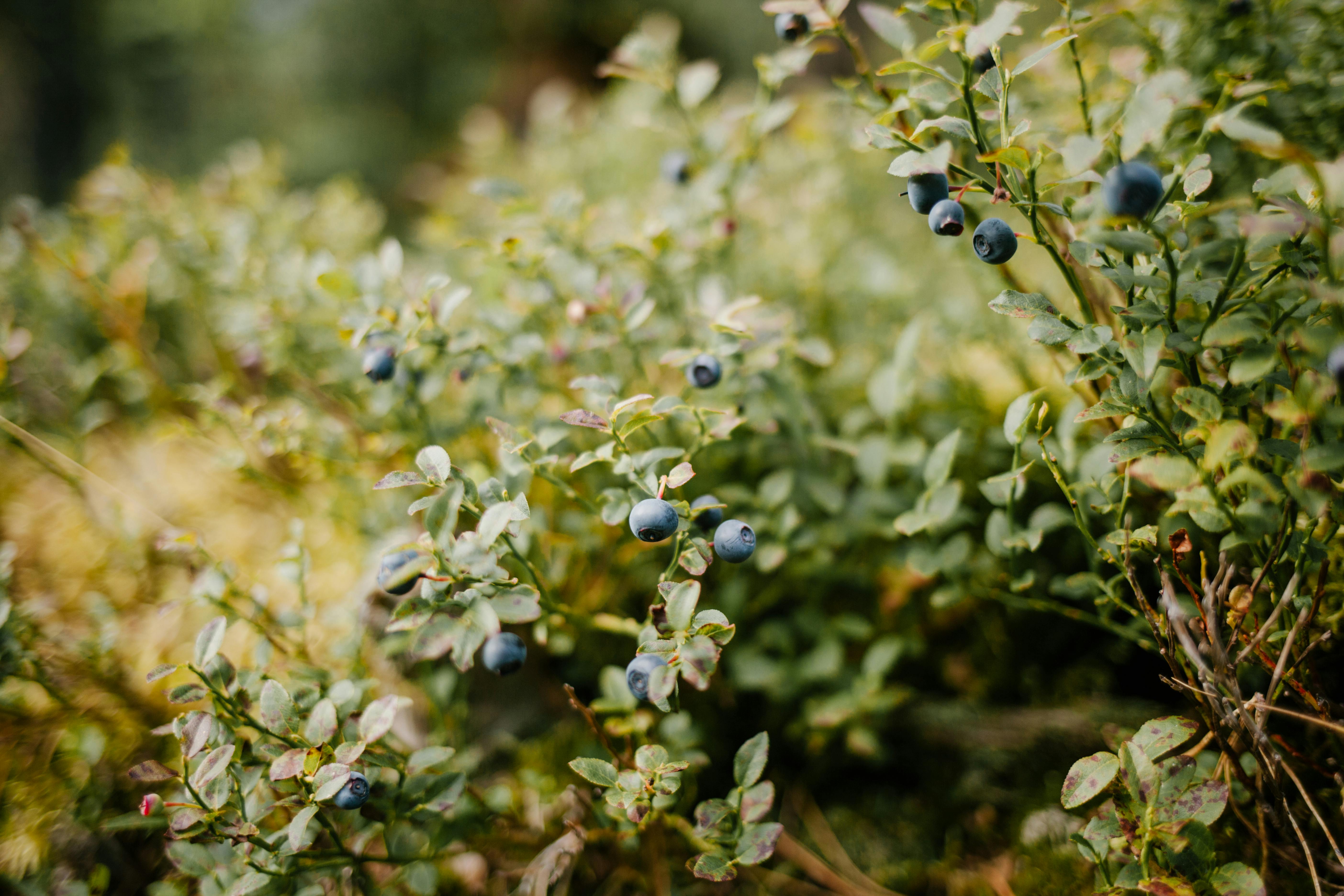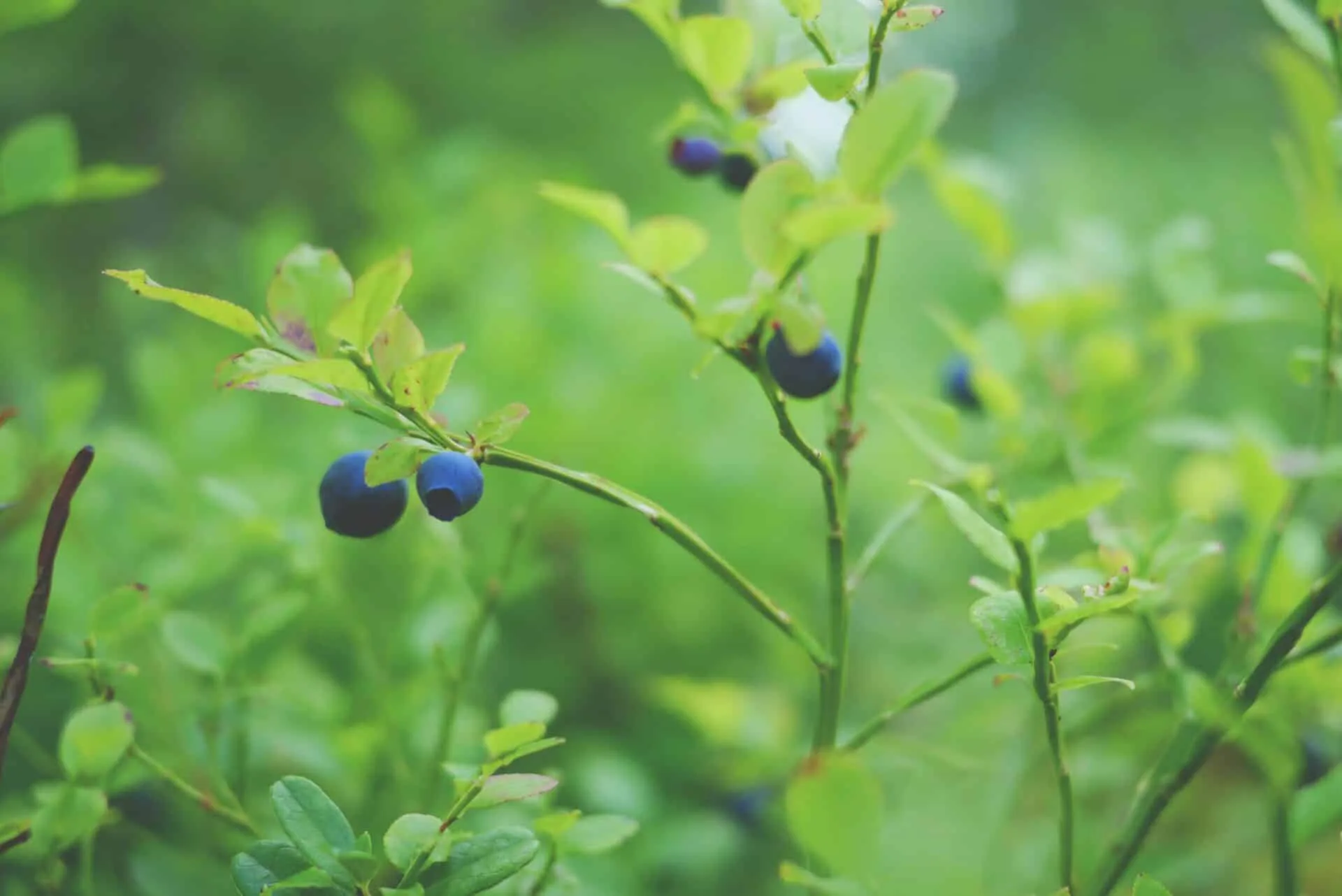If you’ve recently planted a blueberry bush in your garden, you might be wondering why it’s not thriving as you expected. Growing blueberries isn’t always easy, and there are many different factors that can contribute to poor growth. In this article, we’ll discuss the different issues that can arise with blueberry plants and how to diagnose and solve them. We’ll also provide some tips on how to ensure your blueberries are healthy and productive. So if you’re concerned about the health of your blueberry bush, read on!Blueberry plant damage can be caused by a variety of factors including extreme temperatures, insufficient water, inadequate nutrition, pest infestations, and diseases. Extreme cold or hot temperatures can cause the leaves and fruits of the blueberry plant to turn brown and become dried out. Insufficient water can lead to wilting and death of the plant. Inadequate nutrition due to poor soil fertility or lack of fertilizer can cause yellowing of leaves and stunted growth. Pests such as aphids, thrips, and Japanese beetles can suck sap from the blueberry plant’s leaves and cause serious damage. Finally, disease-causing fungi or bacteria can spread quickly across a crop of blueberries if not controlled properly.
How to Spot Blueberry Plant Problems?
Blueberries are a delicious and nutritious addition to any garden, but like any other plant, they can encounter problems from time to time. While many of these issues are minor and can be easily remedied with simple measures, it’s important to know how to identify them so you can take the necessary steps to ensure your blueberry plants remain healthy and productive. Here are some common signs of potential blueberry plant problems that you should look out for.
One of the most obvious signs of trouble is wilting or drooping leaves. This could be due to a lack of water, an infestation of pests or disease, or a nutrient deficiency. If you notice this symptom, check the soil moisture level around the base of the plant and adjust your watering schedule accordingly. If there is no change after a few days, it may be worth looking into possible pest or disease issues.
Yellowing leaves can also indicate potential problems with your blueberry plants. As with wilting leaves, this could be due to a lack of water, nutrient deficiency or pests/disease. In any case, it’s important to take action quickly as yellowing leaves can lead to reduced yields if left unchecked. Again, check the soil moisture level first and adjust your watering schedule if necessary before considering other potential causes for the yellowing leaves.
If there are holes in the leaves or stems of your blueberry plants then this could indicate that they have been attacked by pests such as caterpillars or beetles. Check for signs of these insects around the base of the plant and take appropriate measures such as applying insecticides if necessary.
Finally, if you notice any discoloration on the berries themselves then this could indicate that they have been affected by disease organisms such as fungi or bacteria. If this is the case then you should take steps immediately to address the issue as these diseases can spread quickly and lead to reduced yields if left unchecked.
Overall, keeping an eye out for potential problems with your blueberry plants is essential in order for them to remain healthy and productive over time. By knowing what signs to look out for and taking appropriate action when necessary, you can ensure that your blueberries remain delicious and nutritious year after year!
Signs of Blueberry Plant Stress
Blueberry plants are relatively hardy, but they can still suffer from signs of stress due to environmental or disease-related issues. Some of the most common signs of blueberry plant stress include wilting or drooping leaves, yellowing foliage, leaf loss, stunted growth, and discolored or spotted leaves. Wilting and drooping leaves can indicate a lack of water, while yellowing foliage can be a sign of nutrient deficiency or disease. Leaf loss can occur due to environmental conditions, such as extreme heat or cold. Stunted growth may be caused by poor soil quality or lack of adequate water. Discolored or spotted leaves can be a sign of fungal diseases such as leaf spot and anthracnose.
In addition to these signs, blueberry plants may also exhibit other symptoms such as stunted flowers, branch dieback, bark splitting or cracking, and berry drop. Stunted flowers can indicate a nutrient deficiency or damage from pests such as aphids. Branch dieback is usually caused by unfavorable growing conditions such as drought stress or cold temperatures. Bark splitting or cracking is often caused by extreme temperatures and may lead to damage in the inner bark layers. Lastly, berry drop may occur due to improper pollination or inadequate nutrition.
If any of these symptoms are noticed on blueberry plants it is important to identify the cause so that it can be addressed properly. It is also important to keep an eye out for any pests that could be causing damage to the plant and take steps to eliminate them if necessary.
Common Diseases Affecting Blueberry Plants
Blueberry plants are susceptible to a variety of diseases, though some are more common than others. The most common diseases affecting blueberry plants include root rot, powdery mildew, and Phytophthora root rot.
Root rot is caused by a variety of fungal pathogens and is often the result of poor soil drainage or overwatering. Symptoms of root rot include yellowing or wilting leaves, stunted growth, and dieback. To prevent root rot, it is important to ensure that the soil has good drainage and is not overly wet.
Powdery mildew is a fungal disease that affects the leaves of blueberry plants. Symptoms of powdery mildew include white spots on the leaves or stems and a white powdery substance on the surface of the plant. This disease can be prevented by ensuring that your plants have adequate airflow and are not overcrowded.
Phytophthora root rot is caused by a fungus-like organism called Phytophthora cinnamomi. Symptoms include yellowing leaves, dieback of branches, and stunted growth. To prevent this disease it is important to avoid planting in overly wet soils or areas with poor drainage. Additionally, mulching can help reduce soil moisture levels and create an environment that is less conducive to this pathogen.
Overall, it is important to be aware of common diseases affecting blueberry plants in order to take preventative measures to keep your crop healthy and productive. Proper watering practices, mulching, and adequate airflow can go a long way in preventing these diseases from occurring in your garden or farm fields.
Identifying Nutritional Deficiencies in Blueberry Plants
Blueberry plants need certain nutrients to grow and thrive. Unfortunately, many of these nutrients can be deficient in the soil, leaving the plant unable to reach its full potential. Identifying nutrient deficiencies in blueberry plants is essential for successful cultivation.
The first step in identifying a nutritional deficiency is to look for signs of poor health in the plant. Symptoms such as stunted growth, yellowing leaves, or even wilting can indicate a nutrient deficiency. If any of these symptoms are present, it is important to take action quickly to prevent further damage to the plant.
Once you have identified signs of a deficiency, the next step is to test the soil for nutrient levels using a soil testing kit. This will tell you which nutrients are deficient and how much they need to be supplemented with fertilizer or other additives. It is important to note that different soils may require different amounts of fertilizer or additives depending on their composition and pH level.
Once you have determined which nutrients are lacking, you can then apply fertilizer or other supplements that contain those specific nutrients at the recommended rate for your particular soil type and pH level. Additionally, it may also be beneficial to adjust your watering and fertilizing schedule based on your soil test results.
By following these steps, it is possible to identify and address nutritional deficiencies in blueberry plants before they cause serious damage or hinder growth. Proper care and attention will ensure that your blueberry plants remain healthy and productive for years to come.

Can Insects Damage Blueberry Plants?
Yes, insects can damage blueberry plants. Different types of insects feed on blueberry plants and can cause damage in various ways. Aphids, thrips, mites, mealybugs, spiders, and caterpillars are some of the most common pests that feed on blueberry plants. These pests can damage the leaves, stems, flowers, and fruits of blueberry plants.
Aphids suck the sap from leaves and stems of blueberry plants which can cause yellowing or distortion of the leaves. Thrips are tiny insects that feed on the pollen and nectar of flowers and can cause flower drop or deformed fruit. Mites feed on the surface cells of leaves causing them to become yellow or mottled. Mealybugs are white insects covered in a waxy substance which they use to protect themselves while they suck the sap from stems and leaves.
Spiders make webs around blueberries which prevent pollination from occurring resulting in fewer blueberries produced. Caterpillars chew on leaves leaving behind holes or patches which can reduce photosynthesis and weaken the plant. In addition to feeding on foliage, some insect pests also lay eggs in developing berries causing them to be misshapen or discolored when they mature.
Insects can also transmit diseases to blueberry plants including powdery mildew, leaf spot diseases, root rot diseases, and several virus diseases. To prevent insect damage to your blueberry plants it is important to practice good sanitation by removing weeds regularly and keeping your garden free of plant debris where insects may hide or lay eggs. It is also important to monitor your plants regularly for signs of infestation so you can take steps quickly to control any pests that may be present before they have a chance to do serious damage.
Preventing Disease in Blueberry Plants
One of the most important steps in maintaining healthy blueberry plants is prevention. This includes inspecting plants regularly for signs of disease and pests and removing any affected or infected plants immediately. Additionally, providing adequate soil drainage, selecting resistant varieties of blueberries, avoiding overcrowding, and practicing good hygiene are all important steps to preventing disease.
Inspecting Plants
Inspecting plants regularly is an important step in preventing disease. Look for signs of pests such as aphids, mites, or caterpillars as well as signs of disease such as discoloration, wilting, or spots on the leaves. If you notice any of these symptoms, remove the affected plant immediately and dispose of it in a sealed bag to prevent the spread of disease.
Soil Drainage
Adequate soil drainage is essential for preventing disease in blueberry plants. Poorly drained soils can cause roots to become waterlogged which can lead to root rot and other fungal diseases. Make sure your soil is well-drained before planting blueberries by testing it with a moisture meter or by simply digging down into the soil to check for standing water. Additionally, mulching around plants will help keep the soil temperature even and prevent evaporation from occurring too quickly.
Resistant Varieties
Selecting resistant varieties of blueberries can also help reduce the risk of disease. Look for varieties that are known to be resistant to common diseases such as anthracnose and powdery mildew. These varieties may require less maintenance than other types and can help reduce the chances of your plant becoming infected with a pest or disease.
Overcrowding
Avoiding overcrowding is also important when trying to prevent diseases in blueberry plants. Planting too close together can increase competition for resources such as light, water, and nutrients which can lead to stress on individual plants which makes them more susceptible to pests and diseases. Additionally, overcrowded conditions make it difficult for air circulation which further increases the risk of fungal infections such as powdery mildew or leaf spot diseases.
Hygiene
Practicing good hygiene is also essential for preventing diseases in blueberry plants. When pruning or harvesting fruit from your plants avoid using tools that have been used on other diseased or infested plants as this can spread infection quickly between your own plants. Additionally, keep weeds away from your blueberry bushes as they often harbor pests and diseases that could spread to your own crops if left unchecked.
Location
When it comes to growing blueberry plants, location is key. Blueberry plants prefer full sun and well-drained, slightly acidic soil with a pH of 4.5-5.5. To ensure adequate drainage, it is best to plant blueberries in raised beds or mounds. Mulch can also help retain moisture and improve drainage. Consider planting near a wall or fence for shelter from wind and rain, as well as support for the plants.
Watering
Blueberry plants need consistent watering to ensure healthy growth. Water the soil regularly, especially during dry periods; aim to keep it moist but not soggy. Avoid wetting the foliage when watering as this can lead to disease problems. An inch of water per week should be sufficient in most cases; however, if your blueberry bushes are in containers they may need more frequent watering due to the limited soil volume.
Fertilizing
Blueberry plants need plenty of nutrients to thrive and produce abundant fruit. Fertilize your blueberries with an acidic fertilizer every spring before new growth begins; organic fertilizers such as compost are particularly beneficial for blueberries. Always follow instructions when applying fertilizer and avoid overfertilizing as this can damage the roots.
Pruning
Pruning is an important part of caring for a blueberry plant as it helps promote healthy growth and abundant fruit production. Pruning should be done in late winter or early spring before new growth begins; prune away any dead, diseased, or damaged branches and cut back any overly long branches to shape the bush as desired.
Weed Control
Weeds can compete with your blueberry plants for nutrients and water so it is important to keep them under control throughout the growing season. Regularly remove weeds from around the base of each plant by hand or use an organic mulch such as straw or wood chips to help suppress weed growth.
Protecting your blueberries from pests and diseases is essential for successful cultivation; routine monitoring can help spot problems early on so they can be treated quickly before they become serious issues. Establishing good hygiene practices such as removing fallen fruit regularly will also reduce pest and disease pressure.
Overall, proper care of a blueberry plant involves providing the right location, adequate watering, fertilizing regularly, pruning at appropriate times, controlling weeds effectively, and protecting from pests and diseases when necessary – all of which will help ensure a healthy crop of delicious berries!

Conclusion
If your blueberry plant is not looking its best, it could be due to a number of potential issues. These include lack of sunlight, too much nitrogen in the soil, poor drainage, or inadequate water. To solve the problem, you may need to adjust the water and fertilizer levels, make sure your blueberry plant is getting enough sunlight, and improve the drainage in your soil.
It is also important to keep an eye on pests and diseases that can affect your blueberry plant. If you notice any unusual symptoms or signs of disease or pests, it’s best to take action as soon as possible. Finally, always remember that good gardening practices are essential for healthy blueberry plants.
By following these simple steps and regularly monitoring your blueberry plants for signs of problems, you can ensure they stay healthy and produce a good harvest for many years to come.



